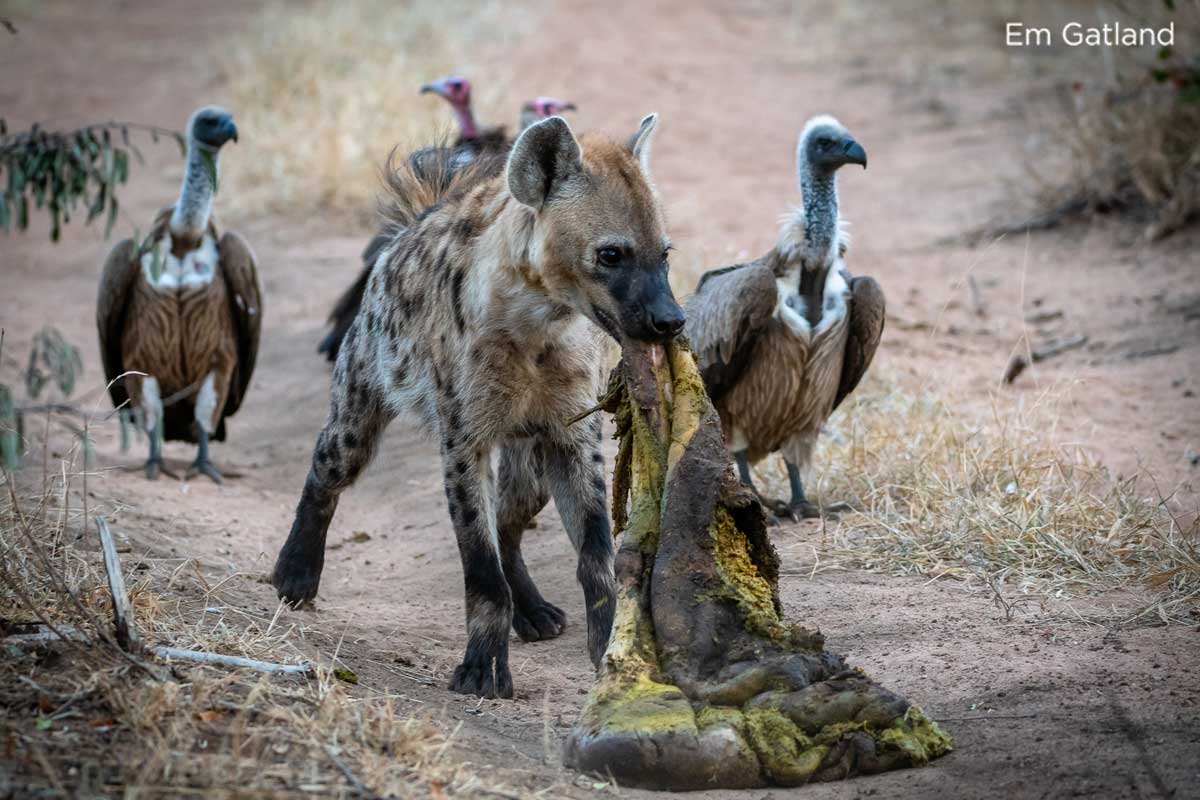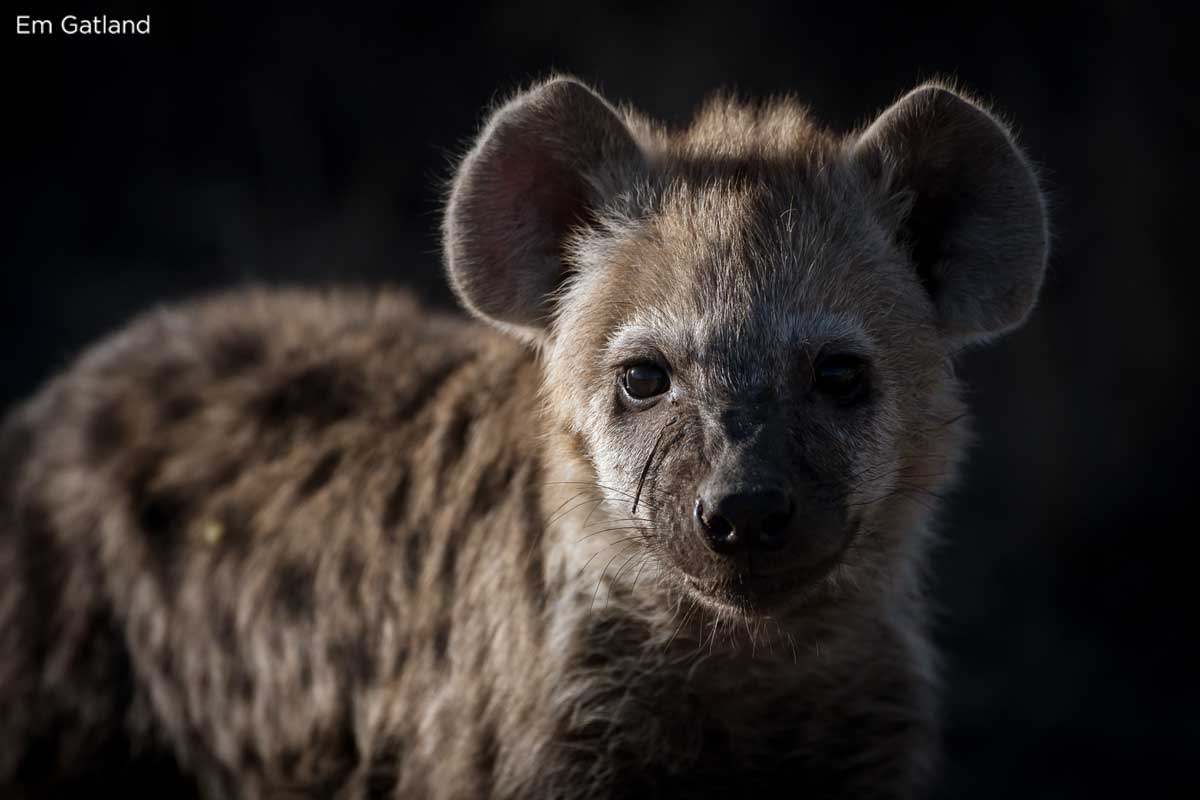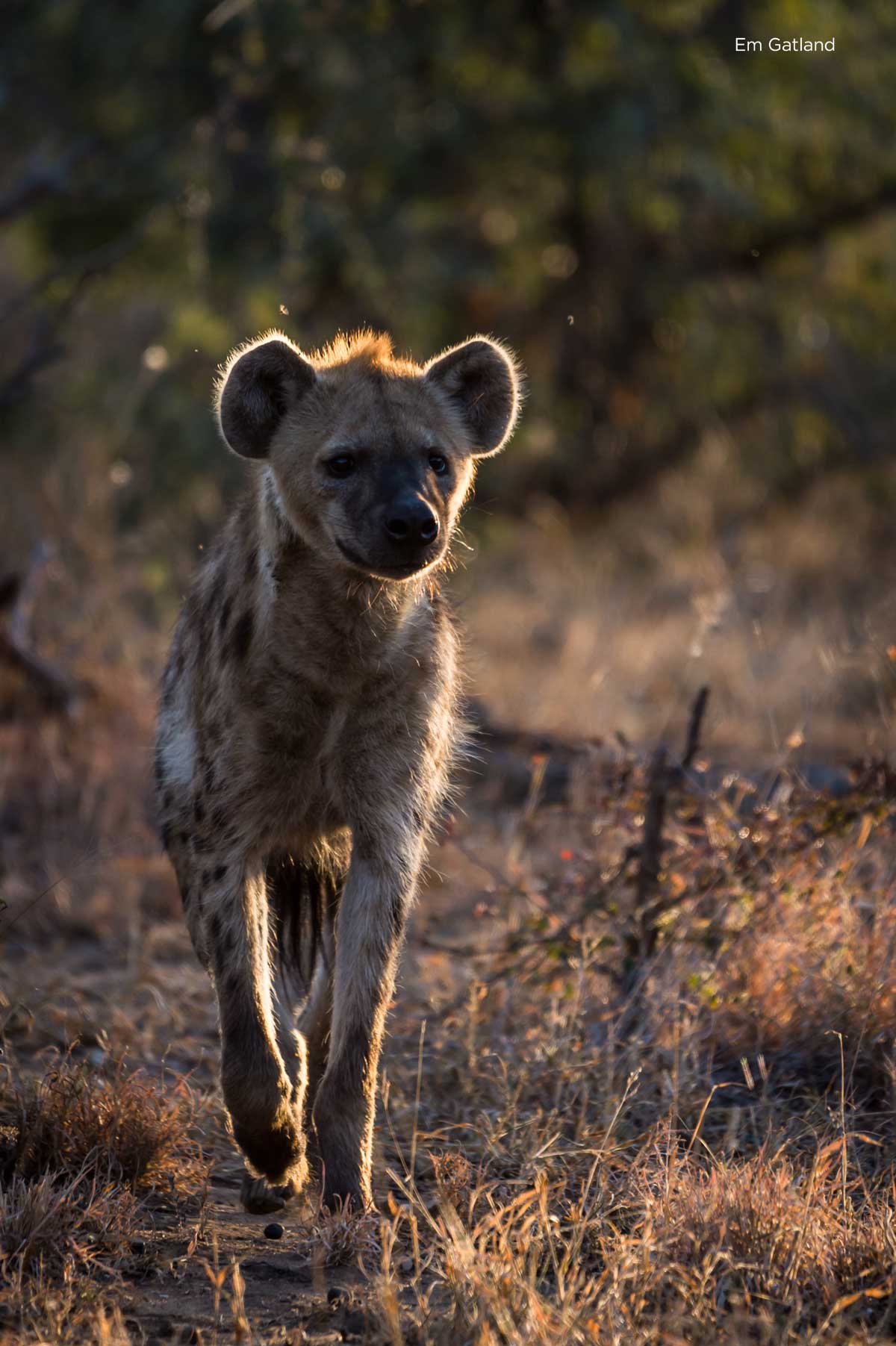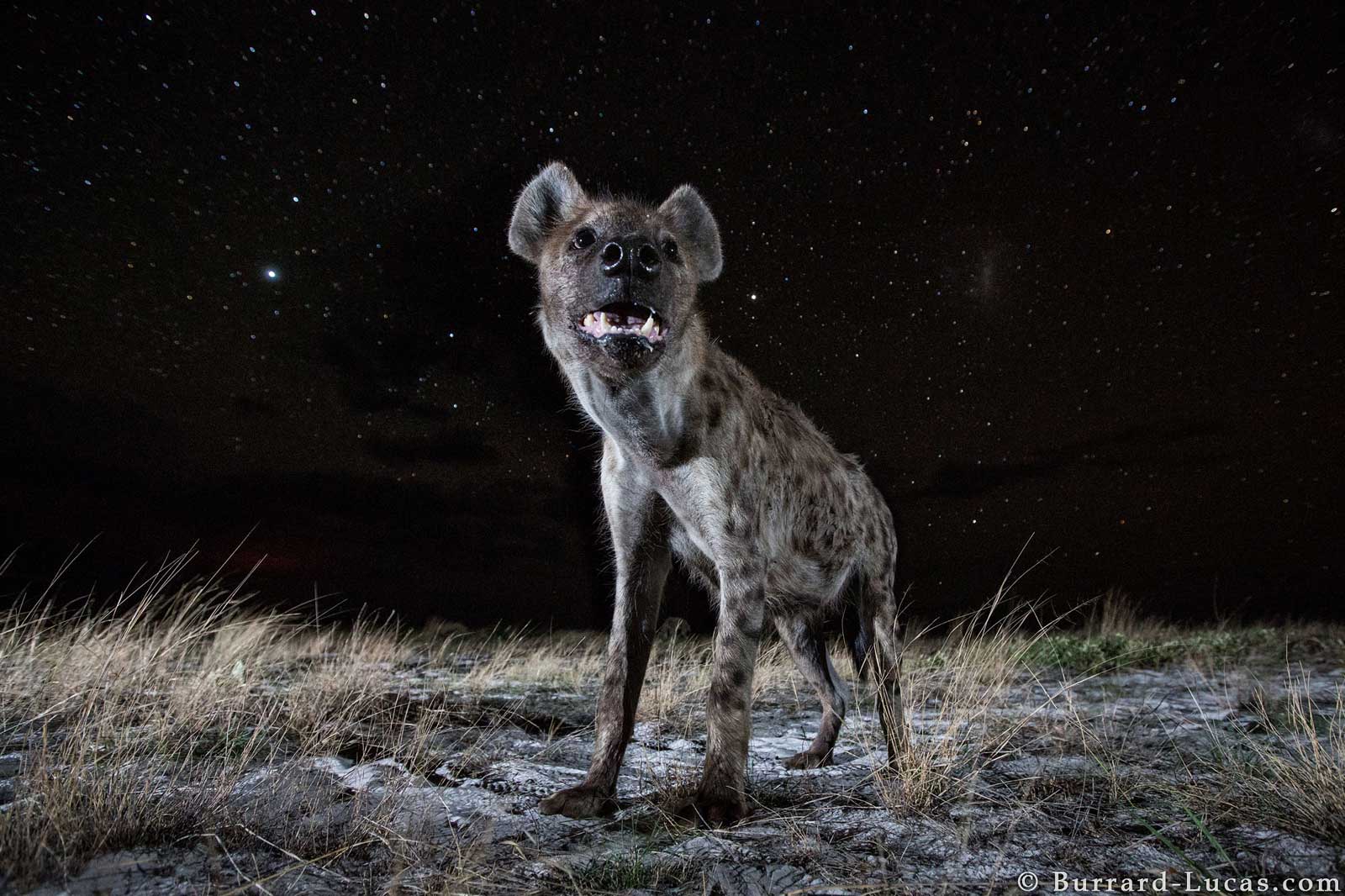Hyenas are misunderstood and have a bad reputation in the wild. Spotted hyenas are the anti-thesis of gorgeous, regal and graceful African wildlife. Visitors certainly don’t flock to Africa to see hyenas. We do understand the possible reasons for hyena hatred, but personally we love these coarse-haired wonders of nature. This animal needs a rebrand and definitely needs more positive reinforcement in literature.
Here’s why we love these strange looking half-dog, half-cat creatures :
- They are supremely successful carnivores that are proficient hunters and scavengers
- Hyena clean up meaty debris and prevent the spread of disease
- The hyena cubs are adorable!
- Their repertoire of vocalisations is fascinating, and their nocturnal whoop is always wonderful to hear when you’re falling asleep in the wild.
Below are a few of the most documented reasons as to why people hate hyenas :
Literature
Hemingway was a notable playwright and lover of all things Africa – except hyena. In 1935 in ‘The Green Hills of Africa” he wrote, “The hyena, hermaphroditic self-eating devourer of the dead, trailer of calving cows, ham-stringer, potential biter-off of your face at night while you slept, sad yowler, camp-follower, stinking, foul, with jaws that crack the bones the lion leaves, belly dragging, loping away on the brown plain.”
He didn’t exactly paint a flattering picture of hyena. Being a prominent figure in literature meant that his word was gospel and many authors penned their opinions about hyenas, without actually knowing the role of the hyena in the wild.
There’s plenty of literature claiming that hyenas are the undead and reincarnation of the devil. And it’s not only literature that has created unnecessary fear around hyena. Movies have also cast hyena as the evil villain, with the Lion King being the box-office hit that reinforces the stereotype!
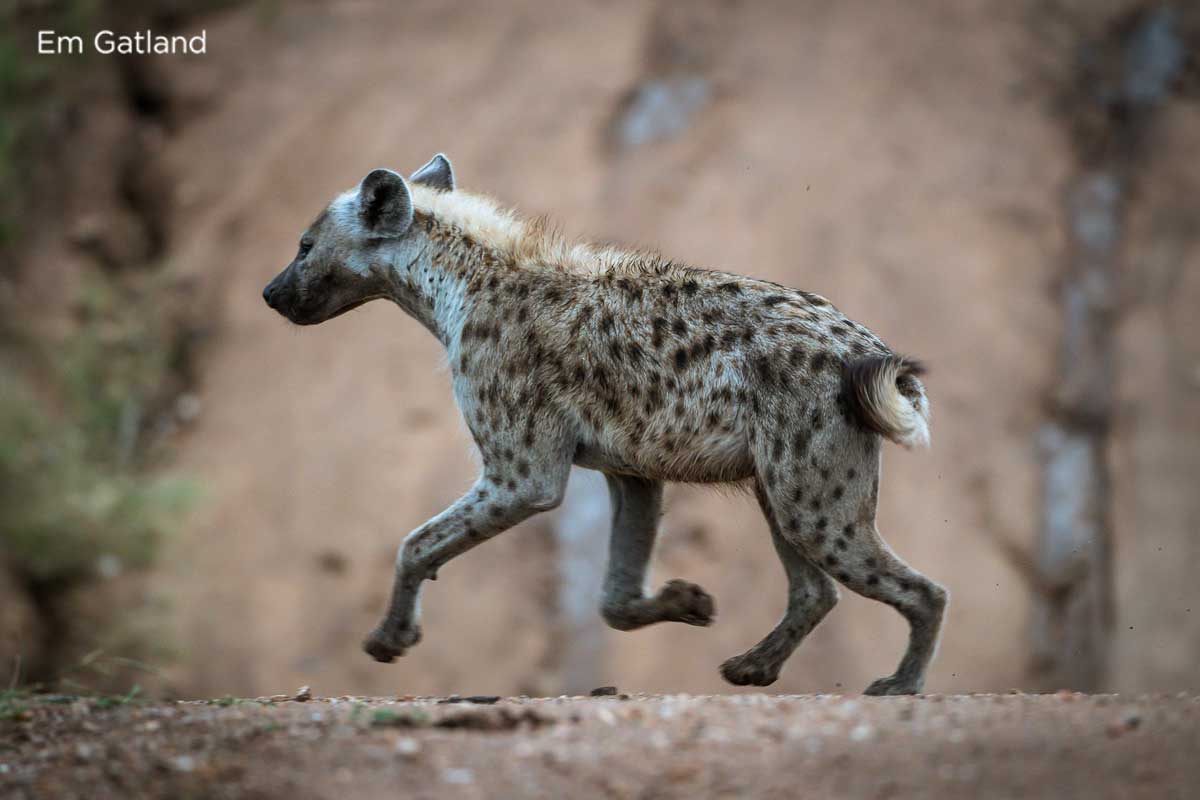
The Female’s Fake Penis
Female hyena have a pseudo-penis that makes it hard to distinguish between male and females when you see them in the wild. Hyenas are often referred to as evil hermaphrodites, a myth that needs immediate dispelling. The female appendage is a strange concept to get your head around, but there’s a perfectly natural biological reason for this.
Female hyena are the dominant leaders within clans. They are larger in size and more aggressive than their male counterparts. Females have a sort of pseudo-penis, which has a multi-functional purpose. This appendage is actually the birth canal, and they also urinate through this canal. Females normally give birth to 2 – 4 cubs, but tragically the first born cub often suffocates on the way out.
So, there you go. A perfectly valid reason as to why the female has a “fake penis”.
Gory and Grotesque Hunting Methods
Hyenas, much like wild dogs, hunt via a method called coursing. They chase their victim for miles until their prey reaches the point of exhaustion. When their mobile meal begins to wane in energy, the hyena uses its bone-crushing jaw to rip apart a piece of the abdomen while their prey is still on the move. Their prey will, at some stage, collapse. Hyena will rip into their prey, shredding the meat from the bone while its still alive. Prey dies quite quickly from shock or blood loss!
Hyena certainly don’t have the most elegant way of conducting kills, but we do need to respect the fact that they are successful hunters and scavengers.
Hit with the Ugly Stick
Hyena haven’t been blessed in the looks department and have an awkward gait. Their bone-crushing jaw with jagged teeth often has strings of saliva dripping from its jowls. The strange loping walk of the hyena makes them look sheepish and sneaky.
Despite being hit with the ugly stick, the hyena’s build is perfectly designed for its role in the wild.
Thieves
Hyena are notorious for stealing kills from leopards and will happily summon the clan members to come steal titbits from lion pride kills. They lope into skill sites with the intent of stealing large chunks of meat. Predators spend their lives fending off hyenas, who certainly don’t like to wait until the competition is done with their meal!
Hyena have a digestive system of steel and simply aren’t affected by diseased flesh. If there is a diseased carcass littering the land, it will affect other scavengers and those that feast of the remains of the kill. Hyena actually prevent the spread of disease by eating contaminated carcasses.
Evil Cackling
A hyena’s laughter is actually one of anxiety and fear. It’s a response to being attacked, or chased from the kill site. And their series of grunts and groans actually form part of their unique greeting ceremony. The cackling is high-pitched and is rather amusing…in an evil kind of way.
